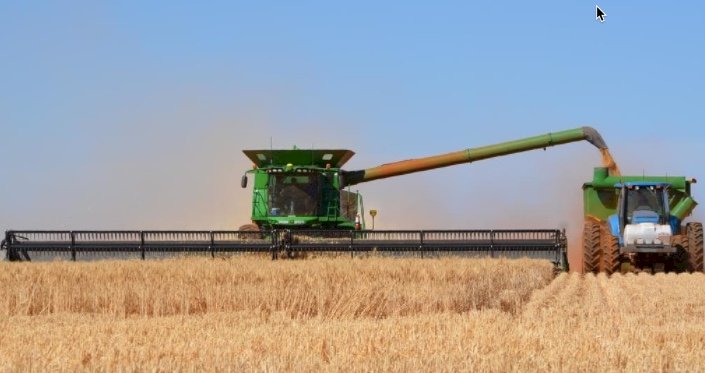Australia’s contribution to global Grain production.
- By: "Farm Tender" News
- Cropping & Grain News
- May 27, 2025
- 264 views
- Share

By Brendan Dart
It is the spring growing season for northern hemisphere crop production and the autumn planting season here in Australia. Weather remains the greatest variable for global agricultural production, and we are currently trying to estimate how the global balance sheets will stack up. This is a constantly moving target and is ultimately the key driver of grain and oilseed prices across the world.
Weather variability continually drives speculation on whether grain supply will be ample or not and what this will do for global grain values. Markets tend to fall in times of surplus and rise in times of deficit. The concept of fair value isn’t easy to define as there are many inputs that help to make up the composition of grain markets.
Australia is acutely familiar with weather volatility. Australia would be considered one of the more volatile regions globally for weather and we are considered one of the driest continents on earth. Our fertile agricultural regions are limited and our ability to increase agricultural production is capped due to the lack of additional land that can be utilised. In simple terms we are a relatively small producer by global standards, however we stand much taller when we view Australia through our contribution to global trade flows.
Australian wheat production is around 4% of global production but we contribute around 11% to global trade flows. Australian barley production is around 9% of global production but we contribute around 25% of global trade flows. Australian canola production is around 7% of global production but we contribute around 24% of global trade flows. These numbers are based on USDA data and will vary largely depending on our production dynamics each season. The bottom line here is that Australia punches well above our weight and make a strong contribution to global trade.
Despite our contribution the reality is that northern hemisphere production feeds the world and is the key driver of grain values. Supply issues in Australia can cause localised issues but if global supply is ample then Australian values will ultimately need to remain competitive into key export markets.
The global grain trade is a complex matrix of surpluses and deficits, and the job of the market is to move grain from the regions of surplus into the regions of deficit. This is typically done via price and the extensive network of trade participants who help to facilitate global and local trade. There are many nuances in trading but ultimately most trade activity is driven by price and availability.
The overall outlook for Australia is not ideal but it is far from a disaster and assuming average weather through our growing season we will still likely have good production and a strong exportable surplus. The market may need to deal with some regional issues but there should be grain available.
This is certainly how Australia will be viewed through the global lens. Global traders will be looking at Australia’s potential contribution to global trade and how this then helps with the global balance sheet.
So how is the global production outlook shaping up?
If we focus on wheat the global production outlook remains relatively strong. As always there are localised areas of concern, but recent rains have been mostly favourable and early season condition scores are above average which is helping to build confidence and adding to negative sentiment. There is a way to go in the northern hemisphere spring however, before we can proclaim that crops are made. The market will remain primarily focused on key areas of the Black Sea and Europe who are the two most prominent global exporters. Production potential and exportable surplus in these two regions will set the tone for global wheat values.
Russia has been the number one wheat exporter for several seasons and the dynamics in the Russian market are the key indicator for global prices. The Russian market has become more complicated since the Russia-Ukraine war commenced with dynamics increasingly politicised. The complexities of government interference in the market and the loss of transparency around price discovery has added an unwanted element to global trade.
Russian farmers planted their crops in below average conditions this season which led to speculation that production would trend lower. Favourable conditions through the winter and early parts of spring have seen crops progressing strongly leading to an increasing bias on crop production. Crops still need to avoid any heat and dryness through June, but the market remains mostly optimistic.
Conditions across Europe remain mixed with some areas looking very good whilst other areas are drier than ideal. Northern Europe continues to struggle a little and will need favourable conditions in the weeks ahead to maintain yield potential.
The US, Canada and South America are all seeing mostly favourable conditions which is creating a level of comfort amongst global consumers. The global market is anticipating a good supply of wheat despite major exporter stocks being tight enough.
So where does that leave Australia?
Australia will again be a strong contributor to global trade flows and our grain prices will continue to be driven by global values. Despite our localised issues it continues to remain important that we maintain perspective on where we sit in the global trade matrix.
Call your local Grain Brokers Australia representative on 1300 946 544 to discuss your grain marketing needs.










Share Ag News Via